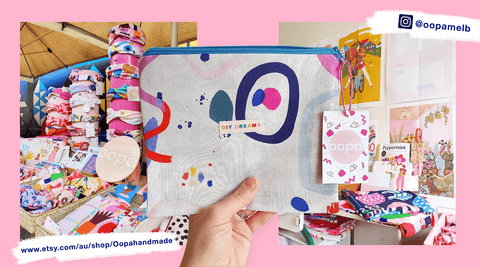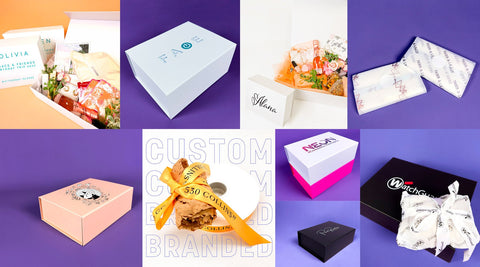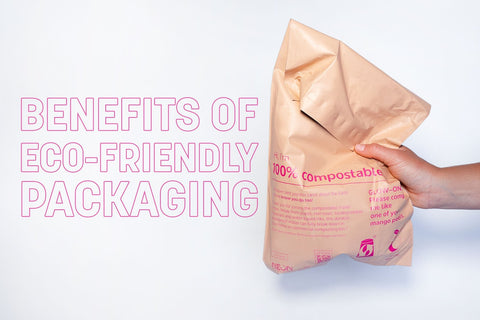Buying handmade is more popular and accessible than ever.
Handmade items are experiencing somewhat of a renaissance. Once cast aside in favour of mass-produced products that can easily keep up with trends, they are now appreciated and sought after by discerning consumers. Time is fast becoming one of the most valuable resources we have. And with this comes respect for the hours spent to create something beautiful and unique by hand.
The resurgence in demand for handcrafted goods is driven by other factors, too: a concern for the ethics and sustainability of the production process is a significant one. Additionally, online marketplaces make it easier for makers and consumers to connect.
Whatever the reasons driving this change, it’s a phenomenon that’s beneficial to and exciting for both buyers and sellers. Let’s look into it a little closer…

Photo/Content Credit: Thank you to @oopamelb for the photos of your beautiful hand crafted creations. You can OOPA purchase here
Buying handmade
Care for our planet and the people on it is, now more than ever, a huge influence on purchasing decisions. And for makers, this is great news: handmade items are much more likely to be sustainably and ethically produced.
Conscious consumption is on the rise; people care about where their purchases come from and under what conditions they were produced. Attention is being paid to the production process of everything from food, to fashion, to electronics. Mass production makes it difficult to ascertain the ethics of any given merchandise, no matter how much a company may market itself as socially responsible. Handmade products or those produced at a small scale by visible makers offer reassurance that no person was exploited during the process.
Additionally, the environmental factor is huge. The effect on the planet, from materials to production methods to transport, plays into many purchasing decisions. And of course, one of the easiest ways to ensure that a product is authentically ethical and sustainable is to buy handmade.
Products made by hand have a quality and value that is appreciated by most buyers. They are unique and creative, and often able to be customised and personalised. There is an added—and very desirable—level of luxury intrinsic in something created by hand. A handmade gift is a gift with a deeper meaning and authenticity.
Marketplaces for makers
Supply follows demand, and this increased interest in buying handmade has seen a rise in the number of makers selling their unique wares through a variety of channels. In some cases, these handicraft businesses are side hustles. In others, they are becoming dream careers.
Online marketplaces are also driving the popularity of handmade items, making them ever more accessible to buyers outside of the maker’s local area. Platforms like Etsy make it possible for craftspeople to sell their wares nationally or even globally, without the hurdle of creating their own website and taking on other overheads to get started.
eCommerce platforms that connect sellers to buyers have minimal overheads and allow makers to spend as much (or as little) time as they can spare on their trade. This report on how online craft marketplaces are changing the nature of business goes further to say:
“As such, craft marketplaces may be revealing entrepreneurial behaviours that were previously held beneath the surface by the minimum costs, scale and time once required to run a business.”
Handmade marketplaces like The Make It Collective connect Aussie Makers with handmade lovers. Over the ditch in New Zealand, a Facebook page started during the initial COVID lockdown in 2020 has become a popular online selling platform (Chooice) for Kiwi makers. These are all opportunities for creative people to turn hobbies into income, reaching wider audiences with their unique products.
Local craft markets are a wonderful institution and remain a cornerstone of business for many makers. The personal interaction with the human behind the product adds something special to a purchase. However, online marketplaces open up more possibilities for both parties.

Maker motivations
As demand and marketplaces make it possible to sell handicrafts on a larger scale, several types of makers emerge.
First, there are the dabblers: those who are putting their skills and talents to use for a bit of extra money on the side. These are part-time makers, taking advantage of the trends to generate some added income. Many are parents at home with children, or full-time employees putting their spare time to use. The removal of barriers to entry when it comes to selling handmade products makes it possible for these people to experiment with their hobby—without the financial risks a brick-and-mortar store would impose.
Another group, as defined in the report linked earlier, is made up of “independents”: those who work independently to create goods that are unique to their own style. They are protective of their craft and may sell full-time but have no other staff or desire to expand their operations beyond what they can handle alone.
Then there are growth-oriented “visionaries”, those seeking to turn their ideas into a thriving business. They hire employees, advertise, and may quickly grow beyond the online marketplace to build their own platform. From these makers come innovations that turn good products into great ones.
As there are different types of makers, each with their individual motivations and dreams, it’s impossible to define “success” in selling handmade. The current climate and high level of accessibility for both buyers and sellers mean that many talented people can choose their production capacity, whether it amounts to a side gig or a full-blown business empire. A lot of them make items to order. Many have customisation or personalisation options. The beauty of these platforms is that makers of all kinds can participate to the level that suits them.
The full package
Making sales online, of course, requires packaging and postage to bridge the gap between maker and buyer. Sustainable packaging is a crucial part of the process and a fantastic marketing opportunity, allowing makers to protect their handmade items in transit, present the uniqueness of their brand, and create an exciting unboxing experience. If you’re just starting out selling your handmade products via eCommerce, check out our blog to get started with eCommerce packaging!
Need to try it before you can choose the right option? Samples have the same quality and features as the NEON products in our collection. Have a look at the range and get your samples.







Comments (0)
There are no comments for this article. Be the first one to leave a message!